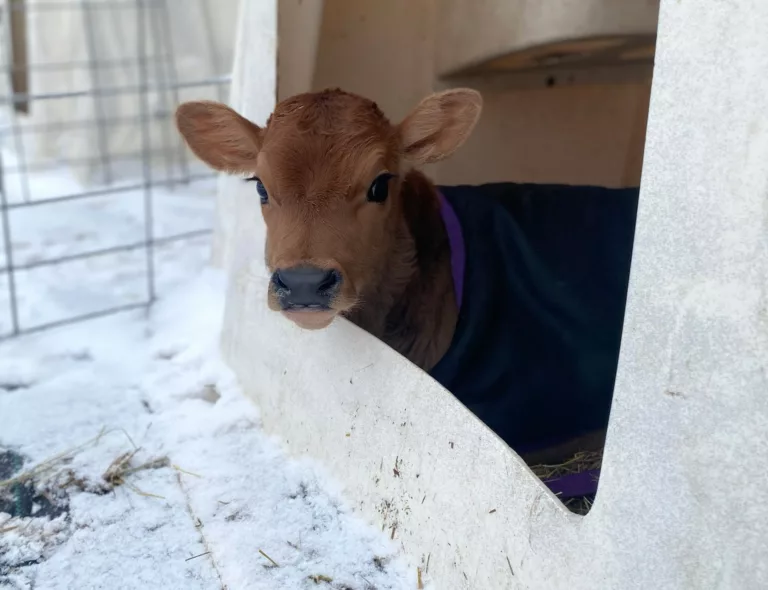During the first few months of life, the calf experiences many internal changes. One of these changes is a transition of the calf’s immune system from passive immunity to active immunity. There are many factors that impact these immune systems and how effective they are in protecting the calf. We will discuss some of the main points in building a strong immune system in your calves.
In-Utero
During gestation, the calf relies on its dam’s immune system for protection. However, it is developing the foundation for its own immune system. This is why providing the dam with proper nutrition is vital for the calf’s future. Gestating cows that are exposed to stressors such as improper nutrition or severe weather conditions (e.g., heat stress) produce offspring that may have limited immune function. It’s important to work with your nutritionist and veterinarian to ensure all gestating females are receiving ideal care to produce optimal calves.
First month of life
At birth, calves are devoid of any immune system, making them susceptible to diseases. High-quality maternal colostrum has been shown to be the single greatest contributor to providing newborn calves with immune protection. To achieve strong passive immunity, calves need to receive at least 150 IgG within the first 24 hours of life. Passive immunity, once established, will protect the calf from disease for the first 3–4 weeks of life.
During the first month, calves are mainly susceptible to digestive (enteric) health issues. The most common culprits in calf health are pathogenic bacteria such as E. coli, Salmonella, Clostridia, and Coronavirus. Calves are constantly exposed to these bacteria as they are naturally in a calf’s intestinal microflora. These bacteria create problems when the calf has a compromised immune system from stressors (e.g., severe weather, poor nutrition, contaminated equipment, transportation, etc.). During times of stress, a calf’s immune system becomes compromised, allowing these opportunistic bacteria to flourish.
From passive to active immunity
Maternal colostrum provides passive immunity, but this protection is short-lived. A few days after birth, passive immunity begins to diminish. This is to allow the calf’s own active immune system to develop so they can provide their own immunity. It is not a seamless transition, however, and there is about a 2-week period where the passive immune system is essentially gone and the active immunity has not become quite functional. This period of vulnerability usually occurs around 2–4 weeks of age. External stressors during this time, such as changes to weather, nutrition, housing, or excessive handling (e.g., dehorning, castration), can cause the calf to become sick.
During this time, respiratory disease becomes a more prevalent concern in calf management. It is important to ensure calves have adequate fresh airflow to keep bacterial growth limited in their pens and to keep them healthy. In addition, clean dry bedding will assist in limiting the calf’s exposure to disease.
After a month of age, the calf has its own fully functioning immune system. Assuming the calf received proper nutrition while in-utero and ideal care once born, it will have the foundation to protect itself from most diseases. Weaning is always a stressful time in a calf’s life. This is why it is important for the calf to be consuming at least 3 pounds of starter daily to ensure that its rumen is functioning properly and they can consume enough to meet their nutrient requirements. Another stressor is comingling calves and moving their housing. Like many mammals, calves are creatures of habit and when those habits are abruptly changed it can shock the system and take some adjustment. We recommend not moving calves or changing their environment unless they are healthy and consuming adequate feed. It will make their transition much smoother.
There are many factors and steps that go into producing healthy and high-performing calves. Reach out to your Esmilco representative to ensure that you are giving your calves the best to keep their immune system strong and functioning.
(Hulbert and Moisá, 2016)






